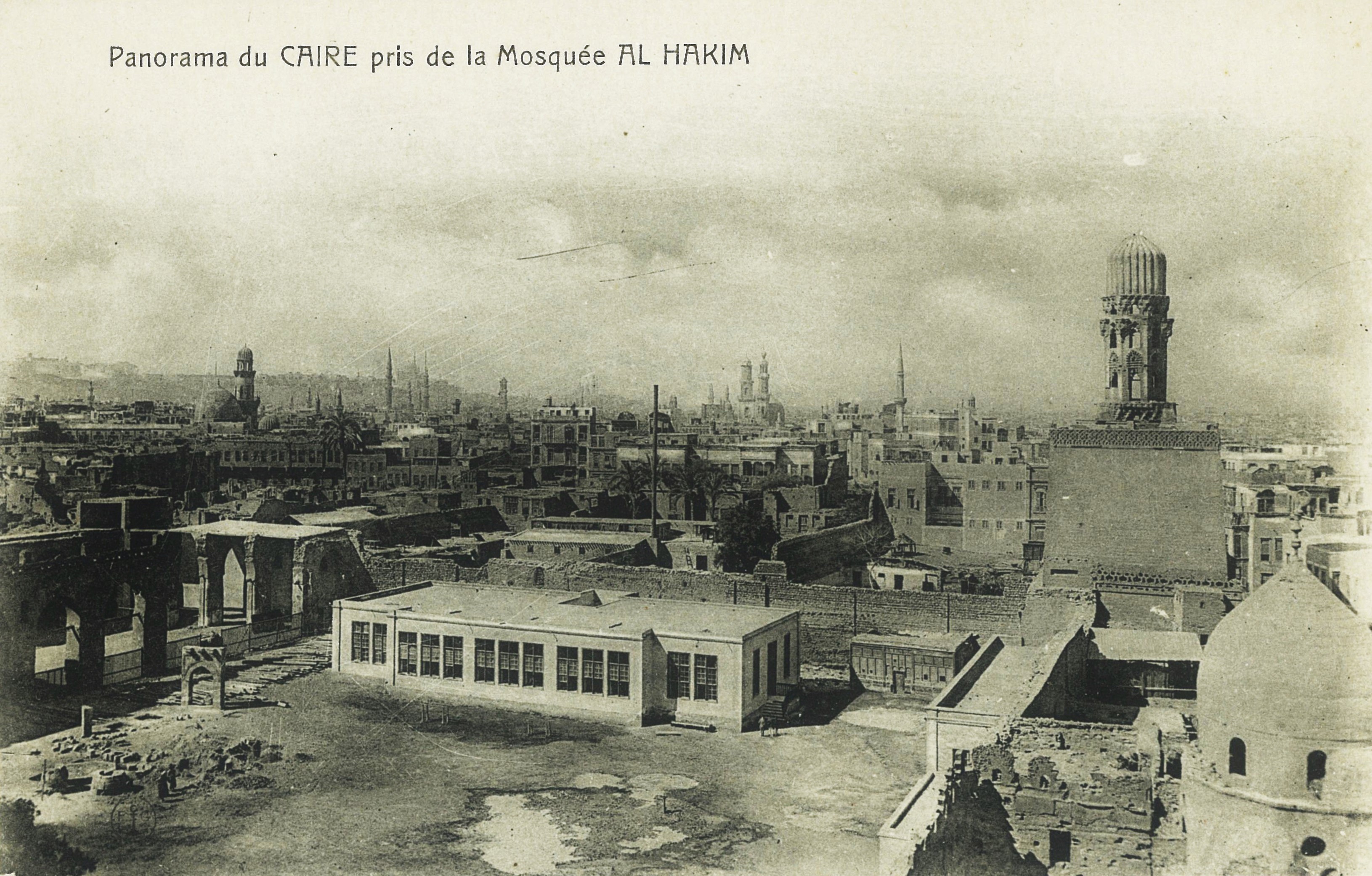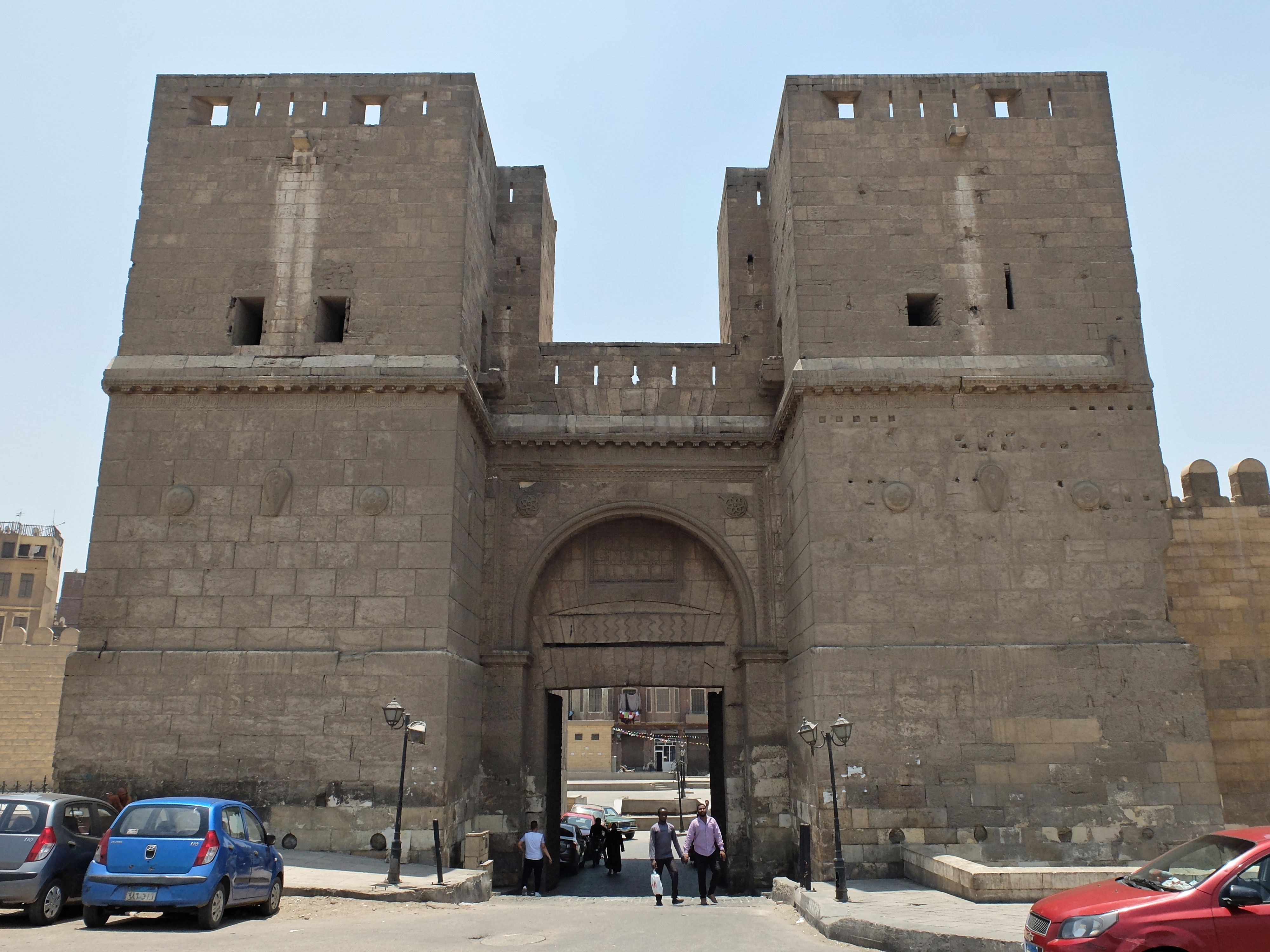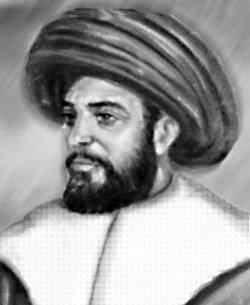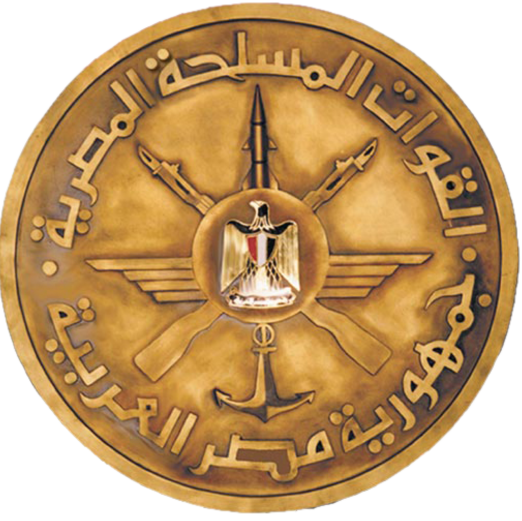|
Al-Hakim Mosque
The Mosque of al-Hakim ( ar, مسجد الحاكم بأمر الله, Masjid al-Ḥākim bi Amr Allāh), nicknamed al-Anwar ( ar, الانور, lit=the Illuminated), is a historic mosque in Cairo, Egypt. It is named after Al-Hakim bi-Amr Allah (985–1021), the sixth Fatimid caliph and 16th Ismaili Imam. Construction of the mosque was originally started by Caliph al-'Aziz, the son of al-Mu'izz and the father of al Hakim, in 990 AD. It was completed in 1013 by al-Hakim, which is why it is named after him. The mosque is located in Islamic Cairo, on the east side of al-Mu'izz Street, just south of Bab al-Futuh (the northern city gate). In the centuries since its construction the mosque was often neglected and re-purposed for other functions, eventually falling into ruin. A major restoration and reconstruction of the mosque by the Dawoodi Bohras was completed in 1980, reopening it for religious use. History Fatimid construction and modifications The mosque's construction was i ... [...More Info...] [...Related Items...] OR: [Wikipedia] [Google] [Baidu] |
Cairo
Cairo ( ; ar, القاهرة, al-Qāhirah, ) is the capital of Egypt and its largest city, home to 10 million people. It is also part of the largest urban agglomeration in Africa, the Arab world and the Middle East: The Greater Cairo metropolitan area, with a population of 21.9 million, is the 12th-largest in the world by population. Cairo is associated with ancient Egypt, as the Giza pyramid complex and the ancient cities of Memphis and Heliopolis are located in its geographical area. Located near the Nile Delta, the city first developed as Fustat, a settlement founded after the Muslim conquest of Egypt in 640 next to an existing ancient Roman fortress, Babylon. Under the Fatimid dynasty a new city, ''al-Qāhirah'', was founded nearby in 969. It later superseded Fustat as the main urban centre during the Ayyubid and Mamluk periods (12th–16th centuries). Cairo has long been a centre of the region's political and cultural life, and is titled "the city of a thousand m ... [...More Info...] [...Related Items...] OR: [Wikipedia] [Google] [Baidu] |
Bab Al-Nasr (Cairo)
Bab al-Nasr ( ar, باب النصر, , Gate of Victory), is one of three remaining gates in the historic city wall of Cairo, the capital of Egypt. The gate's construction is dated to 1087 and was ordered by Badr al-Jamali, a Fatimid vizier. It is located at the northern end of ''Shari'a al-Gamaliya'' (al-Gamaliya Street) in the old city of Cairo and slightly east of another contemporary gate, Bab al-Futuh. History The original Bab al-Nasr was built south of the present one by Fatimid general Jawhar as-Siqilli during the reign of the Fatimid caliph al-Mu'izz, when the city was first laid out in 969. Later, the vizier Badr al-Jamali, under Caliph al-Mustansir, enlarged the city and rebuilt the walls in the late 11th century. He replaced the first gate with the present one, naming it Bab al-'Izz ('Gate of Prosperity'). Despite this, the inhabitants have shown preference to the original name meaning "Gate of Victory", which has remained in use to this day. An inscription on the gat ... [...More Info...] [...Related Items...] OR: [Wikipedia] [Google] [Baidu] |
Mohammed Burhanuddin
Mohammed Burhanuddin (6 March 1915 – 17 January 2014) was the 52nd Dā'ī al-Mutlaq of Dawoodi Bohras. He led the community for 49 years in a period of social, economic, and educational prosperity; strengthened and re-institutionalized the fundamental core of the community's faith; revived its culture, tradition, and heritage. In successfully achieving coexistence of traditional Islamic values and modern Western practices within the community, Burhanuddin completed the work his predecessor Taher Saifuddin had started. Burhanuddin was presented the highest national civilian honors of the states of Egypt and Jordan recognising his revivalism and restoration efforts. He was known in Arab countries as ''Azamat us-Sultan'' (). Owing to extensive travels for community reach-out, he was the first ''Dā'ī al-Mutlaq'' to visit Europe, Australia, and America. Life Early life Burhanuddin was born to Taher Saifuddin and Husaina Aaisaheba in Surat in the Indian state of Gujarat. Burh ... [...More Info...] [...Related Items...] OR: [Wikipedia] [Google] [Baidu] |
Al Hakim Mosque Courtyard
AL, Al, Ål or al may stand for: Arts and entertainment Fictional characters * Al (''Aladdin'') or Aladdin, the main character in Disney's ''Aladdin'' media * Al (''EastEnders''), a minor character in the British soap opera * Al (''Fullmetal Alchemist'') or Alphonse Elric, a character in the manga/anime * Al Borland, a character in the ''Home Improvement'' universe * Al Bundy, a character in the television series ''Married... with Children'' * Al Calavicci, a character in the television series ''Quantum Leap'' * Al McWhiggin, a supporting villain of ''Toy Story 2'' * Al, or Aldebaran, a character in ''Re:Zero − Starting Life in Another World'' media Music * '' A L'', an EP by French singer Amanda Lear * ''American Life ''American Life'' is the ninth studio album by American singer Madonna. It was released on April 21, 2003, by Maverick and Warner Bros. Records. The album, produced by the singer and Mirwais Ahmadzaï, features references to many parts of Ame ...'', ... [...More Info...] [...Related Items...] OR: [Wikipedia] [Google] [Baidu] |
Umar Makram
Umar Makram bin Hussien al-Sayouti ( ar, عمر مكرم بن حسين السيوطي) (1750-1822) was an Egyptian political leader at the time of the 1798 French invasion and in the subsequent political disorders. Biography Makram was born in 1750 in Asyut. He was educated at Al-Azhar University, and became a leader of the nobles of Egypt and an Egyptian national figure. He was prominent in leading Egyptian resistance to the 1798 invasion of Egypt by France (led by Napoleon). After the French withdrew from Egypt in 1801, a power struggle ensued between the Mamluks, Britain and the Ottoman Empire, and Egypt was nominally restored to the Ottoman Empire. Makram allied with Muhammed Ali, the commander of the Albanian troops within the army sent by the Empire to restore order. In May 1805, Egyptians led by Makram forced the Ottoman Sultan at the time, Selim III to replace the Wali Ahmed Khurshid Pasha with Muhammed Ali. Britain disagreed with this decision and attempted ... [...More Info...] [...Related Items...] OR: [Wikipedia] [Google] [Baidu] |
Gamal Abdel Nasser
Gamal Abdel Nasser Hussein, . (15 January 1918 – 28 September 1970) was an Egyptian politician who served as the second president of Egypt from 1954 until his death in 1970. Nasser led the Egyptian revolution of 1952 and introduced far-reaching land reforms the following year. Following a 1954 attempt on his life by a Muslim Brotherhood member, he cracked down on the organization, put President Mohamed Naguib under house arrest and assumed executive office. He was formally elected president in June 1956. Nasser's popularity in Egypt and the Arab world skyrocketed after his nationalization of the Suez Canal Company and his political victory in the subsequent Suez Crisis, known in Egypt as the ''Tripartite Aggression''. Calls for pan-Arab unity under his leadership increased, culminating with the formation of the United Arab Republic with Syria from 1958 to 1961. In 1962, Nasser began a series of major socialist measures and modernization reforms in Egypt. Despite setba ... [...More Info...] [...Related Items...] OR: [Wikipedia] [Google] [Baidu] |
Napoleon
Napoleon Bonaparte ; it, Napoleone Bonaparte, ; co, Napulione Buonaparte. (born Napoleone Buonaparte; 15 August 1769 – 5 May 1821), later known by his regnal name Napoleon I, was a French military commander and political leader who rose to prominence during the French Revolution and led successful campaigns during the Revolutionary Wars. He was the ''de facto'' leader of the French Republic as First Consul from 1799 to 1804, then Emperor of the French from 1804 until 1814 and again in 1815. Napoleon's political and cultural legacy endures to this day, as a highly celebrated and controversial leader. He initiated many liberal reforms that have persisted in society, and is considered one of the greatest military commanders in history. His wars and campaigns are studied by militaries all over the world. Between three and six million civilians and soldiers perished in what became known as the Napoleonic Wars. Napoleon was born on the island of Corsica, not long af ... [...More Info...] [...Related Items...] OR: [Wikipedia] [Google] [Baidu] |
Saladin
Yusuf ibn Ayyub ibn Shadi () ( – 4 March 1193), commonly known by the epithet Saladin,, ; ku, سهلاحهدین, ; was the founder of the Ayyubid dynasty. Hailing from an ethnic Kurdish family, he was the first of both Egypt and Syria. An important figure of the Third Crusade, he spearheaded the Muslim military effort against the Crusader states in the Levant. At the height of his power, Ayyubid territorial control spanned Egypt, Syria, Upper Mesopotamia, the Hejaz, Yemen, the Maghreb, and Nubia. Alongside his uncle Shirkuh, a military general of the Zengid dynasty, Saladin was sent to Egypt under the Fatimid Caliphate in 1164, on the orders of Nur ad-Din. With their original purpose being to help restore Shawar as the to the teenage Fatimid caliph al-Adid, a power struggle ensued between Shirkuh and Shawar after the latter was reinstated. Saladin, meanwhile, climbed the ranks of the Fatimid government by virtue of his military successes against Crusader assault ... [...More Info...] [...Related Items...] OR: [Wikipedia] [Google] [Baidu] |
Crusades
The Crusades were a series of religious wars initiated, supported, and sometimes directed by the Latin Church in the medieval period. The best known of these Crusades are those to the Holy Land in the period between 1095 and 1291 that were intended to recover Holy Land, Jerusalem and its surrounding area from Muslim conquests, Islamic rule. Beginning with the First Crusade, which resulted in the recovery of Jerusalem in 1099, dozens of Crusades were fought, providing a focal point of European history for centuries. In 1095, Pope Pope Urban II, Urban II proclaimed the First Crusade at the Council of Clermont. He encouraged military support for List of Byzantine emperors, Byzantine emperor Alexios I Komnenos, AlexiosI against the Seljuk Empire, Seljuk Turks and called for an armed pilgrimage to Jerusalem. Across all social strata in western Europe, there was an enthusiastic response. The first Crusaders had a variety of motivations, including religious salvation, satisfying feud ... [...More Info...] [...Related Items...] OR: [Wikipedia] [Google] [Baidu] |
An-Nasir Hasan
An-Nasir Badr ad-Din Hasan ibn Muhammad ibn Qalawun (1334/35–17 March 1361), better known as an-Nasir Hasan, was the Mamluk sultan of Egypt, and the seventh son of an-Nasir Muhammad to hold office, reigning twice in 1347–1351 and 1354–1361. During his first reign, which he began at age 12, senior Mamluk emirs formerly belonging to an-Nasir Muhammad, dominated his administration, while an-Nasir Hasan played a ceremonial role. He was toppled in 1351 when he attempted to assert executive authority to the chagrin of the senior emirs. He was reinstated three years later during a coup against his brother Sultan as-Salih Salih by emirs Shaykhu and Sirghitmish. During his second reign, an-Nasir Hasan maneuvered against the leading emirs, gradually purging them and their supporters from the administration through imprisonment, forced exile and execution. He replaced many ''mamluks'' with ''awlad al-nas'' (descendants of ''mamluks''), who he found to be more reliable, competent and a ... [...More Info...] [...Related Items...] OR: [Wikipedia] [Google] [Baidu] |
Madhhab
A ( ar, مذهب ', , "way to act". pl. مَذَاهِب , ) is a school of thought within ''fiqh'' (Islamic jurisprudence). The major Sunni Mathhab are Hanafi, Maliki, Shafi'i and Hanbali. They emerged in the ninth and tenth centuries CE and by the twelfth century almost all jurists aligned themselves with a particular madhhab. These four schools recognize each other's validity and they have interacted in legal debate over the centuries. Rulings of these schools are followed across the Muslim world without exclusive regional restrictions, but they each came to dominate in different parts of the world. For example, the Maliki school is predominant in North and West Africa; the Hanafi school in South and Central Asia; the Shafi'i school in East Africa and Southeast Asia; and the Hanbali school in North and Central Arabia. The first centuries of Islam also witnessed a number of short-lived Sunni madhhabs. The Zahiri school, which is considered to be endangered, continues to exer ... [...More Info...] [...Related Items...] OR: [Wikipedia] [Google] [Baidu] |
Sunni Islam
Sunni Islam () is the largest branch of Islam, followed by 85–90% of the world's Muslims. Its name comes from the word '' Sunnah'', referring to the tradition of Muhammad. The differences between Sunni and Shia Muslims arose from a disagreement over the succession to Muhammad and subsequently acquired broader political significance, as well as theological and juridical dimensions. According to Sunni traditions, Muhammad left no successor and the participants of the Saqifah event appointed Abu Bakr as the next-in-line (the first caliph). This contrasts with the Shia view, which holds that Muhammad appointed his son-in-law and cousin Ali ibn Abi Talib as his successor. The adherents of Sunni Islam are referred to in Arabic as ("the people of the Sunnah and the community") or for short. In English, its doctrines and practices are sometimes called ''Sunnism'', while adherents are known as Sunni Muslims, Sunnis, Sunnites and Ahlus Sunnah. Sunni Islam is sometimes referred ... [...More Info...] [...Related Items...] OR: [Wikipedia] [Google] [Baidu] |









